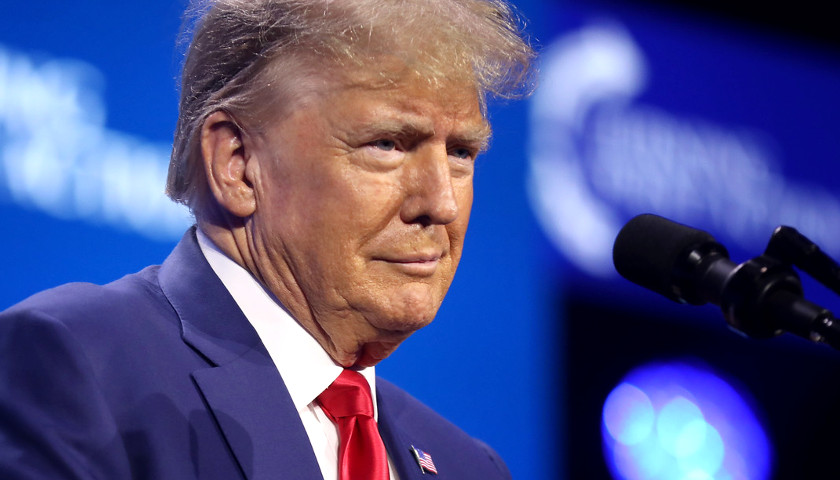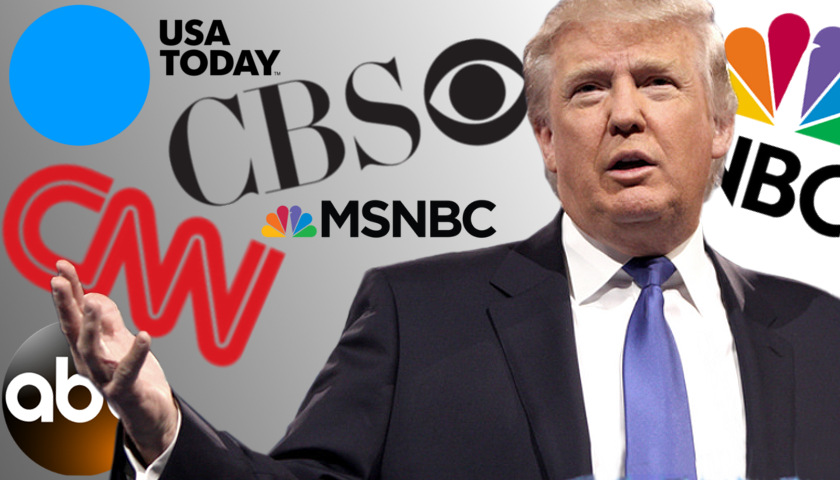With just two and a half months to go before the Iowa caucuses, former President Donald Trump has expanded his lead in the latest Des Moines Register/NBC/Mediacom poll.
But Trump’s lead could actually be bigger than indicated in the kickoff caucus state.
The poll shows Trump is backed by 43 percent of likely Republican caucus-goers as their first choice for president, up from 42 percent in the Register’s last survey in August.
Florida Governor Ron DeSantis, formerly alone in second place in the GOP presidential primary chase, is now tied with former United Nations ambassador and South Carolina governor Nicki Haley, at 16 percent.
DeSantis has slipped 3 percentage points in the Iowa Poll since August, while Haley has seen a 10 percentage point surge since polling at 6 percent in August.
Trump was up 23 percentage points in the August poll.
The Haley campaign has feverishly sold her improving fortunes in the first-nominating and national polls in recent months.
“The Des Moines Register just released a poll showing Nikki tied for SECOND in Iowa! This is the latest poll showing Nikki surging,” a campaign email on Monday boasted, of course, appealing for campaign donations.
But a “surge” in the polls still has the second-place candidate running 27 points behind front-runner Trump.
“You just have (Haley) rising. You have DeSantis kind of holding on for second place,” pollster J. Ann Selzer, president of Selzer & Co., which conducted the Iowa Poll, told the Register. “But both of them are on ground that you could only describe as shaky compared to the solid ground that Donald Trump stands on.
“If anything, he’s showing improvement.”
Trump’s performing even better, when you take a closer look at the numbers and the polling methodology.
The poll of 404 likely Republican caucus-goers was conducted Oct. 22-26 and has a margin of error of plus or minus 4.9 percentage points.
The pollster does not use a list of past Republican caucus-goers, opening up the survey to non-Republicans. Instead they call from a list of registered voters to contact 3,028 self-identified registered voters and screen for likely caucus attendees. They then weight the contacts by age, gender and congressional district.
According to the topline and demographic information, 18 percent of the pool have attended Democratic caucuses in the past, diluting the Republican-ness of the poll. Trump, Public Enemy No. 1 of the left, clearly is much less likely to do well with that category of voter.
In Iowa, voters have to be registered Republican to attend the Jan. 15 GOP presidential caucuses. Unlike primaries, caucuses are administered by the parties. The Iowa Poll does not appear to account for that fact.
The poll does not include some key demographics, including party. It’s not clear whether there are Democrats in the caucus sample. The Register story notes 21 percent of those surveyed are independents, but age, education, gender, region of state, political ideology and other important demographics are not noted.
Despite the missing information, Trump pollster John McLaughlin said the news is all good for the front-runner. He notes Trump is faring much better among independents in the latest Iowa Poll, garnering 33 percent support compared to 21 percent in August.
“He’s doing better among independents and he’s definitely doing better with Republicans,” said McLaughlin, CEO and partner at New York-based McLaughlin & Associates.
Trump’s lead is considerably larger on other GOP presidential rivals in the field, according to the Iowa Poll. U.S. Senator Tim Scott (R-SC) is the first choice of 7 percent of likely caucus-goers. Ohio entrepreneur Vivek Ramaswamy, the first millennial Republican to run for president, is at 4 percent. So is former New Jersey Governor Chris Christie, who isn’t even campaigning in the Hawkeye State. North Dakota Governor Doug Burgum is the choice of just 3 percent of likely Republican caucus-goers.
Scott recently announced he was going “all-in on Iowa.” The campaign sees “an opportunity and wide-open evangelical lane to win the Iowa Republican caucus.” He recently doubled his campaign staff on the ground in the Hawkeye State and opened a new West Des Moines headquarters. Following the third Republican Primary debate on Nov. 8 in Miami, Scott plans to be in Iowa every week leading up to the Jan. 15 caucus.
Haley and DeSantis also have announced plans to bolster their campaign presence in Iowa over the closing months of the Hawkeye State campaign.
Recent campaign drop-out Mike Pence is polling at a dismal 2 percent in the Iowa Poll. The former vice president over the weekend admitted what the poll numbers show, that “this is not my time.”
Pence’s first-choice votes were redistributed to poll respondents’ second-choice candidates in the poll, according to the Des Moines Register.
Nationally, Trump leads his closest competitor, DeSantis by 46.5 percentage points (59.1 percent to 12.6 percent), according to RealClearPolitics’ latest average of Republican presidential primary polls. Haley continues to lag farther behind at 8.3 percent.
While Trump may be facing a host of unprecedented legal problems and a furious left-wing campaign to remove his name from the ballot, it’s the former president’s nomination to lose with just 76 days to go before the kickoff Iowa caucuses.
As McLaughlin noted, Trump never enjoyed the kind of lead he’s experiencing now in his 2016 run for president.
– – –
M.D. Kittle is the National Political Editor for The Star News Network.
Photo “Donald Trump at Turning Point” by Gage Skidmore CC2.0.









Trackbacks/Pingbacks